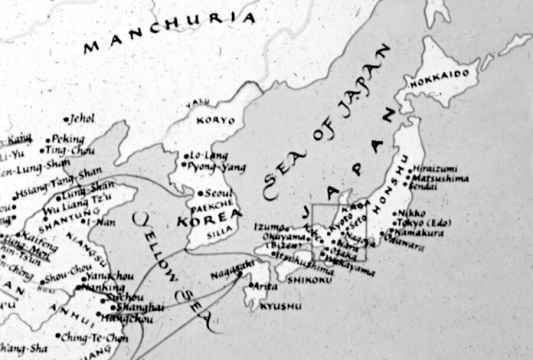Introduction |
|||
The architecture of Japan spans several thousands of years and covers a wide variety of styles, designs, phases and techniques. As a result, people may find it difficult to find information about simply the architecture of temples or other specific topics about architecture in Japan. Therefore, the purpose of this web site is to give people a place to quickly find some information on the temples of Japan with links and a bibliography to help them start their own research on a specific topic. My site deals primarily with Buddhist temples, but you may find it possible to use the resources I have provided in order to further your own studies on the architecture of Japan. The information found on this site comes from my own personal research for Professor Anne Marshall's Non-Western Architecture class at the University of Idaho. This site will be continually updated as I gain more information about the temple architecture of Japan.
A Brief HistoryThe first inhabitants of Japan migrated over from the mainland of Asia around 10,000 BC. Mostly nomadic, they made their settlements around rivers and along the ocean in order to fish or hunt small game. The artifacts that have been discovered from this period known, as the Jomon Period, are the bones of whales and other sea animals, and the distinctive earthenware from this period that exhibits the impression of ropes pressed into the clay before being fired. In the 3rd century BC, as people began migrating east from Kyushu, the southern most island of Japan, closer to Osaka bay, they began to cultivate rice and began making permanent settlements. The architecture of this period, called the Yayoi Period, began to show hierarchy among the different classes, as those of higher status lived in two story dwellings, while the commoners lived in simple pit dwellings. Settlements also began using iron and bronze and constructing elevated storehouses. By the fifth century AD, the Japanese had developed a system of social organization in which several large clans fought for supremacy over the country. As the most influential clans became the Imperial family, their ancestral Gods became the symbolic guardians of the nation. Religious funerals and other rituals of worship became targeted towards their Gods and that was reflected in the architecture. Many funerary mounds can be found from this period up until the sixth century, when Buddhism was introduced and thus cremation became the accepted method of funerary practice. The taste in architecture of the people from this period leaned towards simplicity and the use of wood as the material of choice. With the introduction of Buddhism from Korea in 537 AD, the need for a new kind of architecture for the study and teaching of the Buddhist doctrine emerged. Buddhism traveled from India, then to China and then to Korea before coming to Japan, and with it, the various architectural styles of those cultures. As you will soon discover, the architecture of Japan went from light and simple, to heavy and elaborate because of the influence of the Chinese.
|
|||
Home |
Temples |
Bibliography |
Links |
